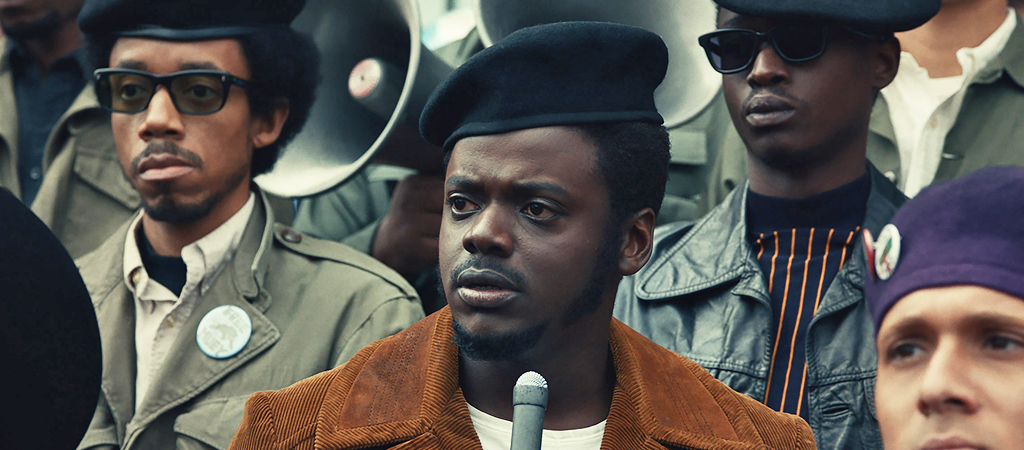
Judas And The Black Messiah is a tough movie to criticize, because not only is it a relative win for even existing, it also does many things right. Some have been critical of the decision to cast 31-year-old Daniel Kaluuya as 21-year-old Chicago Panthers chairman Fred Hampton, and 29-year-old Lakeith Stanfield as then-20-year-old Bill O’Neal. Maybe that’s fair on paper, and doesn’t do justice to the youth of the movement, but it’s also hard to argue with a performance as electrifying as Kaluuya’s, or with casting two generational talents in a chronicle of an iconic event. It’s a film of fantastic performances and stirring compositions.
Yet while it does most of the “movie” things close to perfectly, a few of the choices late in the movie add up to something that’s maybe less inspiring than it could be and slightly contradictory. As Assistant Professor of History and African American Studies at the University of Iowa Simon Balto put it to me this week, “We didn’t really get a movie that had a lot to say coherently about what the Panthers were doing and why that was important.”
Part of that perhaps comes down to the decision to frame the story around Bill O’Neal, the FBI informant within the Panthers played by Lakeith Stanfield. Director Shaka King has said the pitch he accepted from the film’s co-writers, the Lucas brothers, was “The Departed in the world of COINTELPRO.”
Politics aside, it’s certainly a killer pitch. Yet something about the events leading up to the finale feel slightly off in some elemental way, smudging the reality of certain events without much payoff. We’re getting into spoiler territory so stop reading here if that’s an issue (assuming it’s possible to “spoil” historical events depicted in a movie).
The Inciting Incident
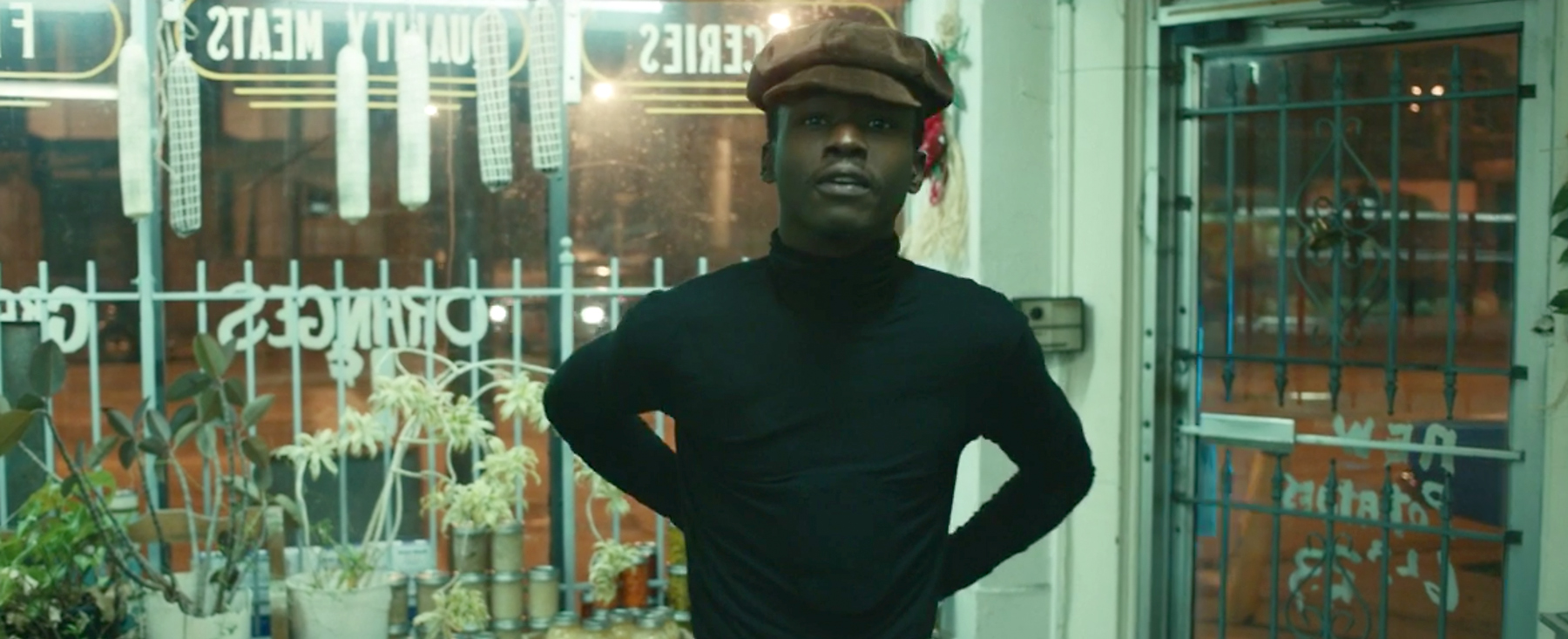
As the movie tells it, there’s an incident in which a Panther, “Jimmy Palmer” (played by Ashton Winters) sees Chicago cops frisking three black men inside a store. Palmer struts inside, and demands to know what the men have done to deserve this treatment while reaching for a pistol behind his back. The police pull their weapons and a gunfight ensues, with Palmer wounding a cop and getting shot in turn. Palmer goes into the hospital seemingly in stable condition, but never comes out.
Balto, the author of Occupied Territory: Policing Black Chicago from Red Summer to Black Power and who’s currently at work on a biography of Fred Hampton, says he believes this was based on a real incident, involving a man named Larry Roberson.
“He and another guy were selling copies of the Black Panther newspaper, which was a common fundraising strategy. They were out on the street and saw these police harassing a bunch of elderly Black men. They went to intervene and police claimed that Roberson shot at them first,” Balto says. “The Panthers said that that wasn’t true, that Roberson wasn’t even carrying a gun. I think that the contours of what happened are represented there, where Roberson was shot by the police, was admitted to the hospital in good condition and then ultimately died very unexpectedly under very suspicious circumstances.”
But if the “contours” of the event are correct, what about the part where a Panther walked upon two police officers with his hand on a gun?
“I think that if that sort of thing did happen, it would’ve been a break from the guidance of Panther leadership like Hampton,” Balto says.
While the Panthers frequently spoke of and treated the police like an occupying army, they also weren’t stupid. Claiming a dead suspect had a gun or shot first was a well-known police tactic at the time. In The Assassination Of Fred Hampton by Jeffrey Haas, Hampton himself recounts an incident in which police had arrested him for an old traffic warrant to keep Hampton from a planned TV appearance, and left him uncuffed in a police car that had a gun in the back seat. Hampton immediately spotted it for what it was — a setup. “I put my wrists outside the car and started screaming, ‘There’s a gun in the car that somebody left.’”
This speaks to why this initial scene feels off — its perspective is more the police than the Panthers. And the Palmer incident is only the first of a few scenes in which Judas And The Black Messiah is, as Balto puts it, “essentially adopting the police versions of events.”
It’s a strange choice in the context of a movie about an event where the police’s initial version was proven conclusively to be very wrong, and in this exact way.
The Retaliation
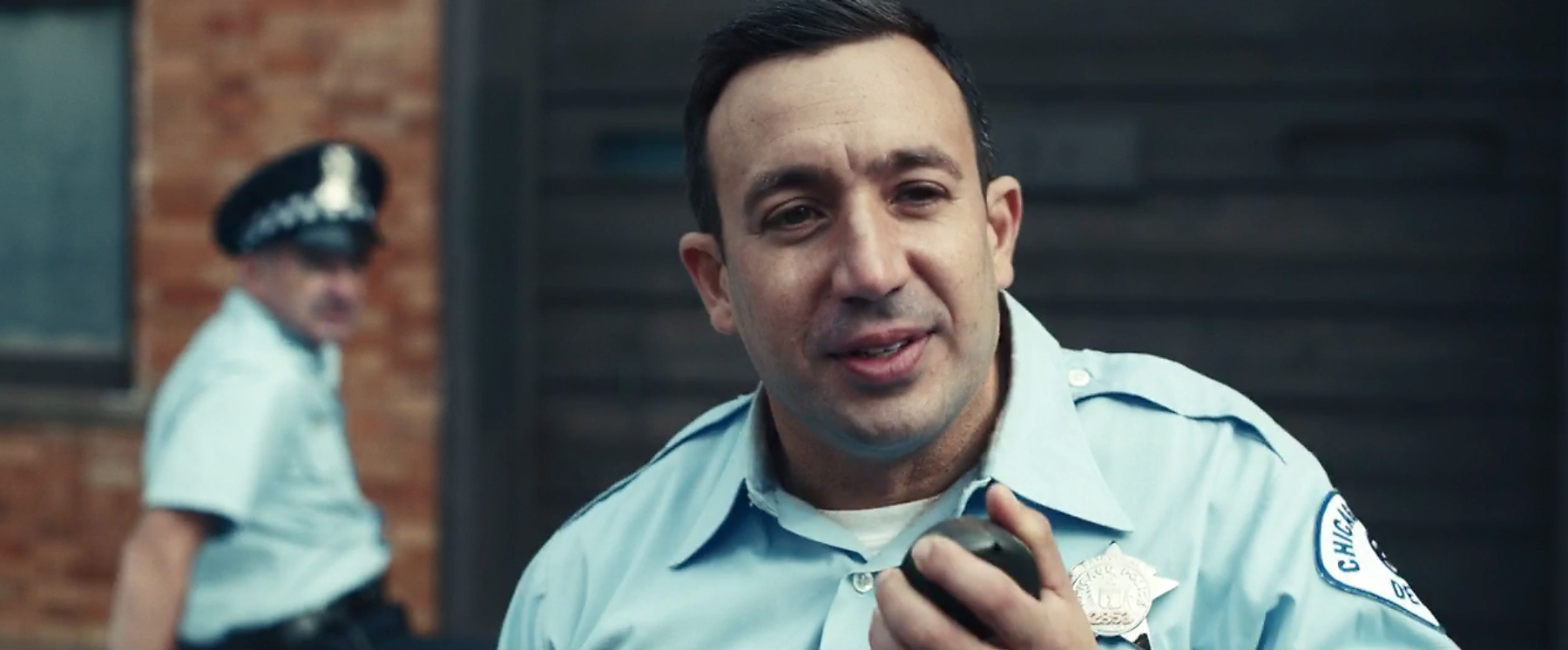
In the movie, the Chicago Police retaliate for this incident by setting up camp outside the Panther headquarters. We see the police drinking beer and harassing bystanders, telling the Panthers that “either you come out or we’re coming in.”
Balto says this is probably a composite of a few different events, a common, and what I would deem “fair,” way to streamline facts into movie form.
“There was a series of raids over the course of 1969 on Black Panther headquarters by the CPD,” Balto says. “The Panther headquarters was burned a couple different times with specific targeting of supplies for Free Breakfast for Children program.”
In Eyes On The Prize 2, a 1990 PBS documentary (an excerpt of which appears in Judas) another Panther recounts the police having burned their cereal.
“In those raids,” Balto says, “things generally never happened in broad daylight in the way they’re depicted in the film. Raids generally took place some time between 1:00 am and 5:00 am to try to move in under cover of darkness.”
Again, not an egregious fudging of the facts. The odd part is the sequence of events as the movie depicts it. In the film, it’s again the Panthers who up the ante, when Judy Harmon, played by Dominique Thorne (said to be a composite of real female Panthers) appears at the open window, cocks a shotgun, and points it at the crowd of police.
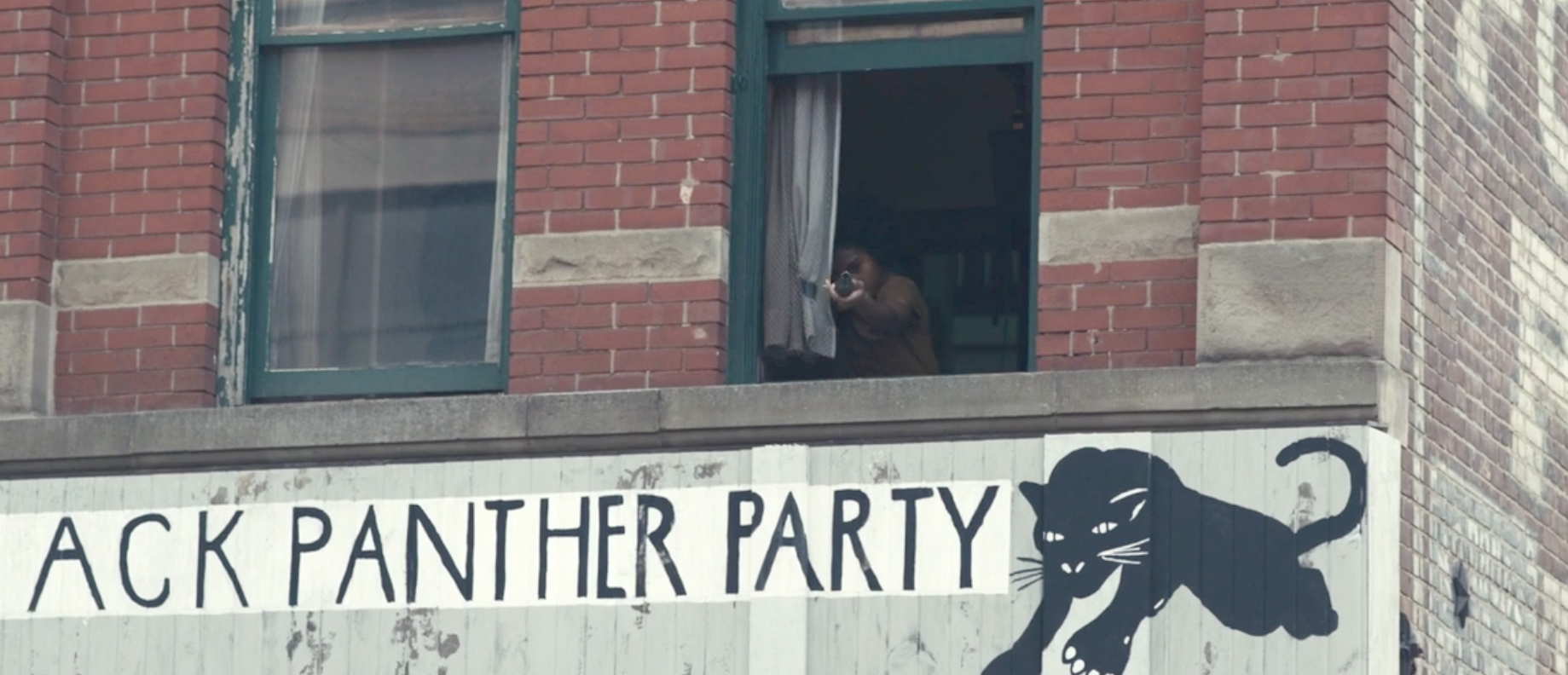
Even without knowing the history of the exact incident, it defies common sense. This was a group of people hyper-aware of the fact that police would take any excuse to shoot or arrest them. The reason Fred Hampton had even stopped driving by the time of the movie was to prevent the police from constantly giving him frivolous traffic violations.
“It’s again sort of adopting the police version of events,” Balto says of the scene. “Generally speaking, the Panther version of events was that the police arrived, initiated violence, and Panthers fired back in self-defense. I mean, the full title of the Black Panther Party is ‘The Black Panther Party for Self-Defense.’”
This scene is also a weird echo of the way the police described the eventual raid that killed Hampton, right down to the shotgun. State’s Attorney Edward Hanrahan, whose office coordinated the raid on Hampton, said during a press conference after the raid, that as soon as the cops leading the raid announced themselves, “Occupants of the apartment attacked them with shotgun fire. The officers immediately took cover. The occupants continued firing at our policemen from several rooms within the apartment. Thereafter three times Sergeant Gross ordered his men to cease firing, and told the occupants to come out with their hands up. Each time one of the occupants replied ‘shoot it out’ and continued firing at the police officers.”
While the conventional wisdom would dictate that every story has multiple sides and the truth probably lies somewhere in between, in this case Hanrahan was found to be, shall we say, “lying out of his ass.” Many of what the police initially claimed were bullet holes coming from Panthers firing at them turned out to be nail heads. Later forensic analysis showed that while police fired more than 90 times during the raid, only one shot came from the Panthers. And that one shot was likely a “reflexive death-convulsion” fired after being shot.
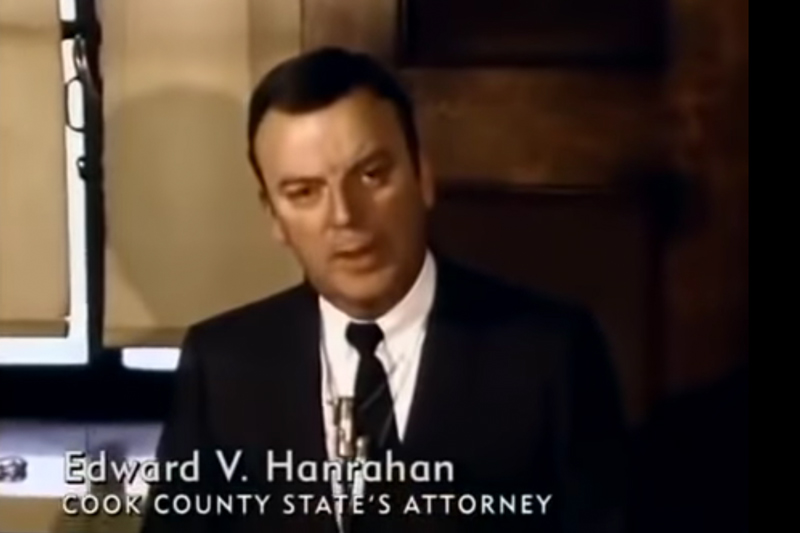
The Death Of Jake Winters
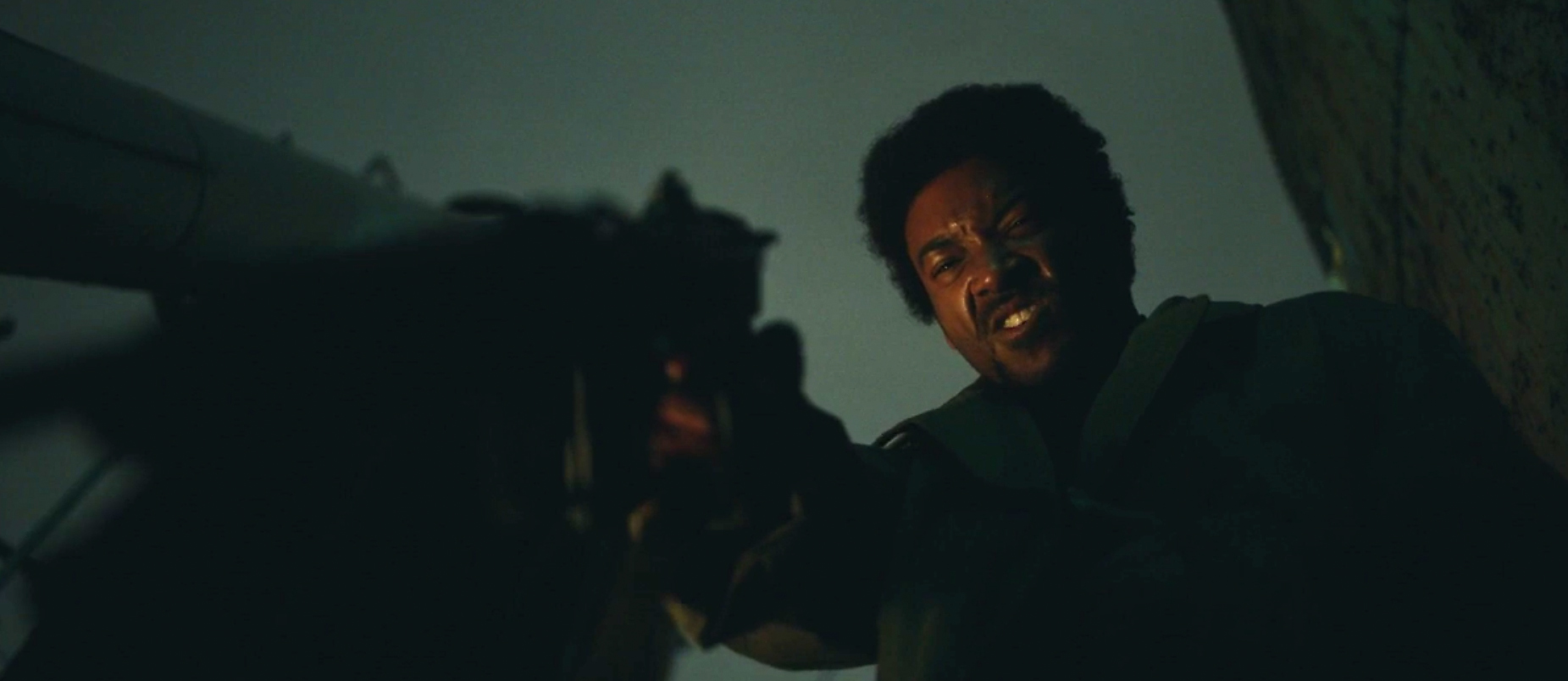
In the movie, following the shootout at Panthers headquarters, Jake Winters (played by Algee Smith) finds out that his friend, Jimmy Palmer, the Panther who was in the hospital, has died. Winters is furious and suspects foul play, and he shows up at the house of a black janitor at the hospital demanding to know what happened. The janitor blows him off, saying something to the effect of, “Do you have any idea how treacherous these crackers down there is?”
The janitor is almost certainly invented, but it’s an effective device and a great line. In the film, Winters drops a gun while pounding on the janitor’s door. The janitor sees it, gets scared, and calls the police, setting the scene for the real-life shootout between Winters and the police. Winters wounds a police officer, who we see lying on his back, moaning “Please… please…” Winters walks up and shoots the cop in the head just before dying in a hail of bullets.
“I think that for the most part, that did sort of play out in the way that they depict it, in terms of the closing moment of that scene where he executes the cop at point-blank range,” Balto says.
“It’s important to also be conscious of the fact that we are singularly reliant on a police version of events because Jake Winters, when he had his last stand in Washington Park on the South Side, didn’t make it out. The eyewitnesses who were there to tell the story about what happened were all cops. But at the end of the day, two police were dead, one of whom with basically an execution-style wound to the head, and Winters was gunned down in a hail of bullets.”
Still, it wouldn’t have been unusual for the time for police to have exaggerated how savage or brutal a political enemy’s killing of an officer actually was. In the aftermath of the Attica Prison Riots (the story of which takes up the second half of the same Eyes On The Prize episode the Bill O’Neal interview came from), the warden initially claimed the prisoners had castrated their hostages and cut their throats. In reality, they turned out to have been killed by bullets, almost certainly fired by the officers who stormed the prison.
In Winters’ case, you could say that the film depicts “the facts as we know them.” Yet it’s also stripped of some important context. It’s also included in such a way that suggests a tit-for-tat gang war between the Panthers and the Chicago Police, rather than a fairly established pattern of oppression.
“It wasn’t just the fact of his friend getting killed that drove him to do this,” Balto says. “I mean, it was almost assuredly a response to this broader pattern of violence against young Black men and women at this time by police.”
“When Hampton goes and visits with Jake Winters’ mother after Winters is killed, she makes a passing reference to ‘Do you suppose the officers who killed the Soto brothers are getting these types of harassing phone calls?’”
“It’s a reference to two of the most recent and alarming murders of young Black men by the Chicago Police Department in the days and weeks leading up to the Winters standoff. John Soto was a teenager who was shot without provocation while unarmed by the Chicago Police Department. And then his older brother Michael, who was also very young and a community organizer, was home on leave for Vietnam. Michael organizes some protests against police brutality and within a few days of him burying his brother, the police kill him too.”
The way the film chooses to show the most graphic part (and the most graphic version of the most graphic part, with police as the only witnesses) seems to create a false equivalency with the police murder of Hampton. Who was himself killed with two shots to the head by members of the police raid. Who, according to Hampton’s girlfriend, Deborah Johnson (played by Dominique Fishback) were then overheard through the door saying “he’s good and dead now.”
Why do we get a Panther looking bloodthirsty while the Chicago Police get to commit their murder on the other side of a door? Certainly, there may be a justifiable reason, from that just being how the events were recounted by witnesses, to not knowing who actually pulled the trigger during the Hampton raid and not wanting to speculate, to simply not wanting to cheapen Fred Hampton by depicting his murder in too graphic a fashion. Lots of moviegoers might not want to see Fred Hampton get shot in the head, and that’s understandable.
Still, the result is 1: the two events are connected more in the film than they were in real life. 2: Hampton’s murder feels like the less “sensational”of the two in the movie, and perhaps less “outrageous” as a result. In reality, Winters was a guy trying to shoot his way out of a gunfight; Hampton was killed in a political assassination while he was drugged and asleep.
FBI Agent Roy Mitchell And The Informant, Bill O’Neal
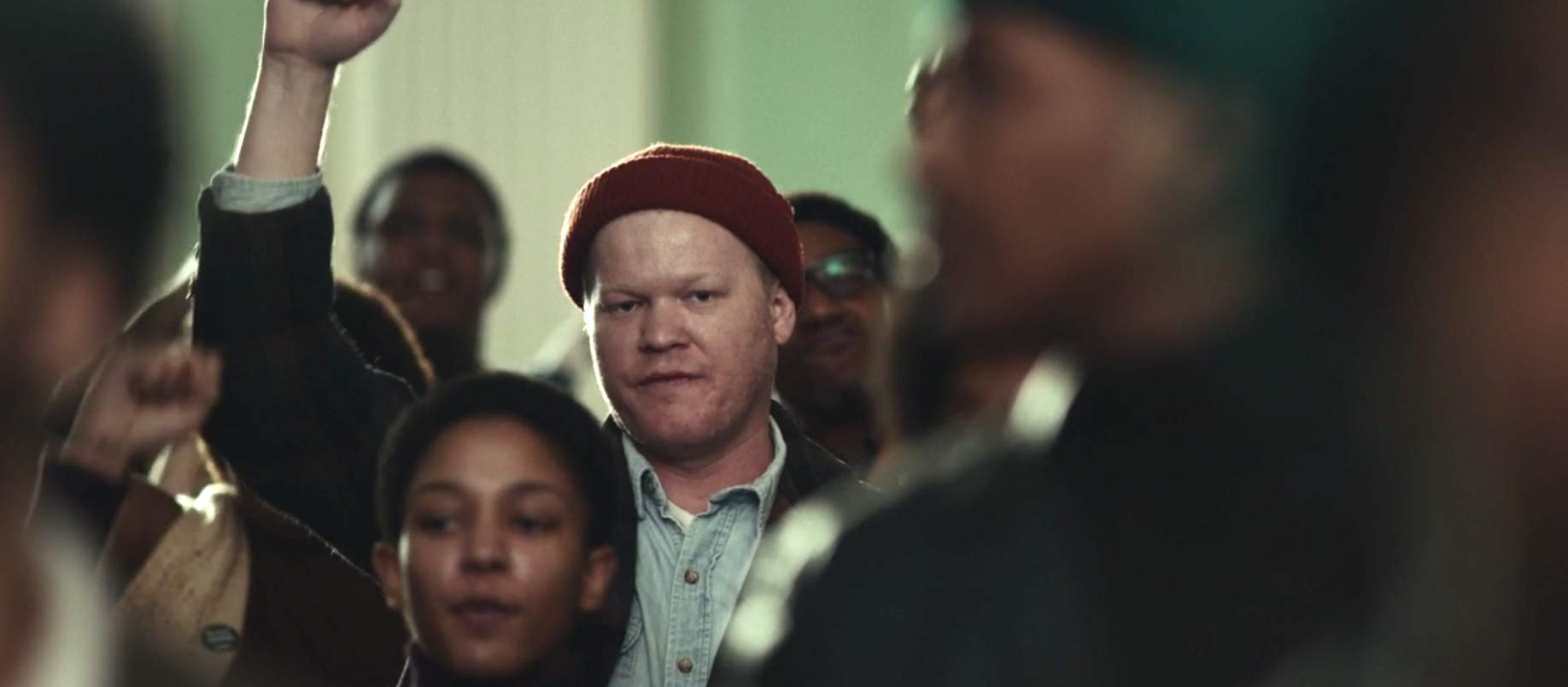
That the pitch for Judas And The Black Messiah was “The Departed in the world of COINTELPRO” meant necessarily framing the story of Fred Hampton’s killing around this “lesser” character of Bill O’Neal, the FBI informant, played by Lakeith Stanfield. We see O’Neal stealing cars in the beginning of the film, and agreeing to inform for FBI agent Roy Mitchell, played by Jesse Plemons, both of which actually happened.
In both Eyes On The Prize and in Panthers lawyer Jeffrey Haas’ memoir, The Assassination Of Fred Hampton, the relationship between Mitchell and O’Neal was said to be like mentor/protege, or even father/son, with O’Neal seeing Mitchell as a kind of role model he’d never had (which is where the age of the principal characters does become relevant). The film runs with this version, largely revolving around these two characters. Yet the character of both men proves elusive, and hard to pin down.
“The story of how insidious that relationship was between Hampton and O’Neal didn’t just end with the assassination. William O’Neal literally carried Fred Hampton’s casket at his funeral, as one of the pallbearers,” Balto says.
The film depicts O’Neal, who was clearly crumbling in his Eyes On The Prize interview and committed suicide the day it aired, as a victim of the FBI, coerced into being an informant to avoid jail time or worse. Certainly, there was some justification for this.
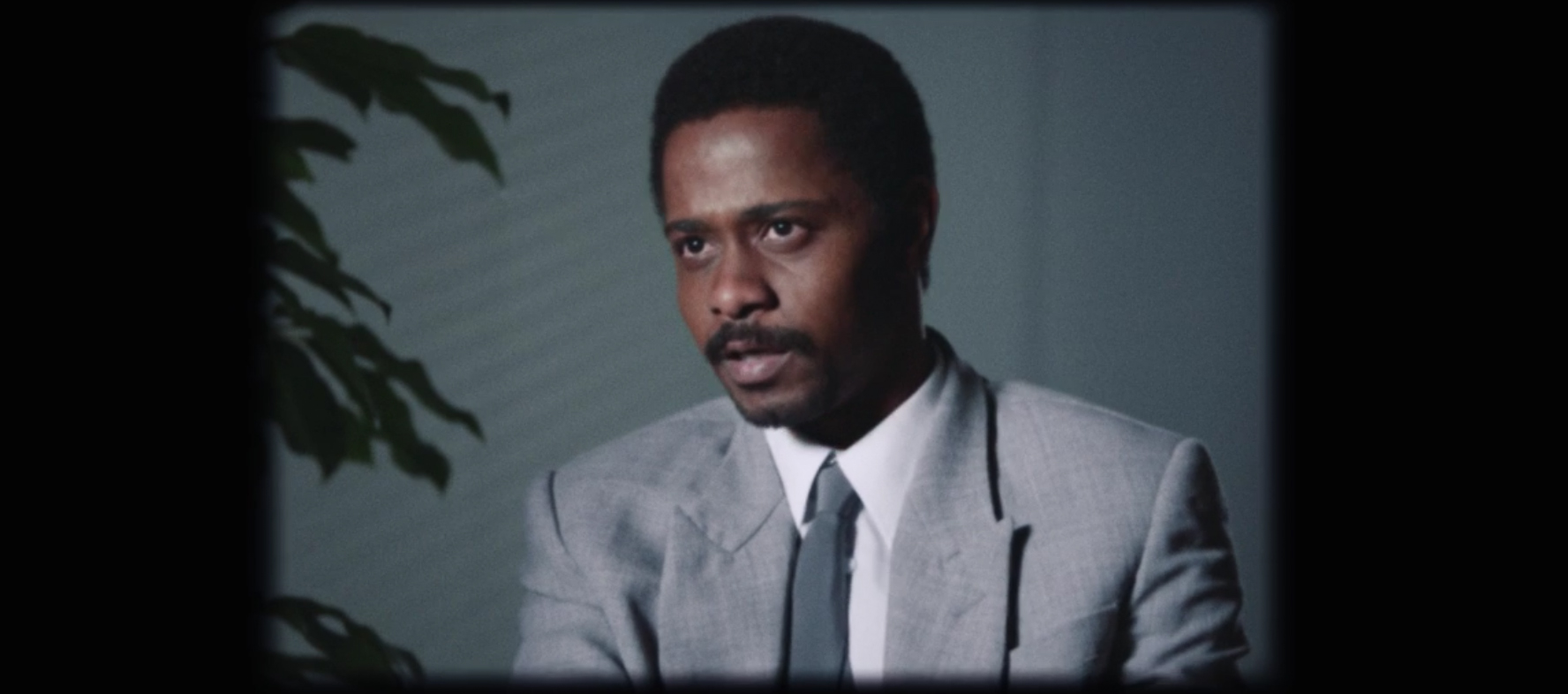
The odder choice is the film’s treatment of FBI agent Roy Mitchell, who they also depict largely as someone who started fairly innocent, but was coerced into going along with J. Edgar Hoover’s nefarious plans by extreme intimidation.
In the film Mitchell (played, again excellently by the deft Jesse Plemons) is sort of a dowdy “both sides” kind of guy in the beginning, trying to build rapport with his informant by bragging that he helped take down the corrupt cops and Klansman who murdered some civil rights workers in Mississippi in 1964 (incidentally, an event that was depicted in the film Mississippi Burning). This apparently real chapter of Mitchell’s life was also mentioned in his 2000 obituary in the Chicago Tribune. We’re clearly meant to see Mitchell as sort of a “good guy” at the beginning, if flawed.
The question is, why?
This was a guy who, according to the same obituary, had nine different informants in the Black Panthers. Depicting Mitchell as genuinely a boy scout — rather as single-mindedly focused on catching whoever the boss told him to, or simply manipulative — requires giving Mitchell a kind of “heel turn” later in the movie to explain how he knowingly ends up planning Hampton’s murder. The film achieves this in the form of a visit by J. Edgar Hoover, played ghoulishly by Martin Sheen (a characterization Hoover almost certainly earned) who asks Mitchell pointedly, “What would you do if your daughter brought home a negro?”
Mitchell seems taken aback as to why Hoover would be asking these things about an infant, and the scene is a little convoluted, but the idea seems to be that Hoover got Mitchell to participate by threatening his family. It’s hard to understand how this benefits the story.
“J. Edgar Hoover was an absolutely horrible human being. But to the degree that that then translated into J. Edgar Hoover turning the screws on an otherwise unwilling FBI field agent is just… sort of unnecessary,” Balto says. “There’s plenty related to the assassination that is still withheld from the public, but I’ve gone through a couple thousand pages of FBI documents about the buildup to their surveillance of the Panthers and of Hampton, and there’s never been anything in it to indicate to me that Roy Mitchell was anything but just down to do what was necessary to just sort of neutralize Hampton.”
—
Who knows, maybe they thought it was more interesting to give Roy Mitchell an arc. Jesse Plemons was certainly entertaining to watch. Obviously, turning a time period that could easily make for five separate movies into a single definitive portrait of Fred Hampton and the Panthers requires cutting some corners. Not to mention that the history is so disputed that it’s impossible to do without making everyone angry. The filmmakers deserve credit just for finally getting a Fred Hampton movie made, let alone in a form the general public might actually see.
Even beyond that, the film sings in some of its more rousing Hampton moments, like when he’s building his Rainbow Coalition, uniting the Young Patriots and the Young Lords, and speaking in front of college students. Yet the film also weakens its own impact by including what feel stunted attempts at “both sides,” and by telling the story through O’Neal, whose personality even now seems largely inscrutable.
“I think that there’s so much to be said about why Fred Hampton not only mattered, but continues to matter,” Balto says. “There are so many lessons about the work that he did and the political philosophies that he articulated — there’s just so many lessons in his brief life’s work that would be valuable, especially for young organizers today.”
‘Judas and the Black Messiah’ is currently streaming via HBO Max. Vince Mancini is on Twitter. You can access his archive of reviews here.
